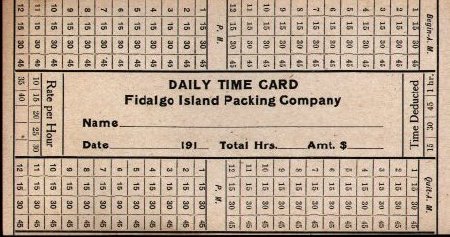Description:
On the Clock
Come July, Ketchikan's canneries have historically been buzzing with activity. Seafood processors are hard at work turning the silver hordes into profitable exports. In the past, for each filling machine it had, a cannery could employ 50 to 60 workers, depending on skill level and speed. Most performed a variety of tasks like sorting, butchering, salting, filling cans, cooking, inspecting, labeling, and cleanup. The days were long and the work was repetitive, tedious, and strenuous. Working conditions varied with the assignment, but were mostly wet, cold, and noisy. Despite the exhausting circumstances, a good crew could produce upwards of 1,000 cases a day.
Little is known about the vast majority of cannery workers. This employee timecard dates to the 1910s and provides a humanizing element to the grueling work they faced season after season. The Washington-based Fidalgo Island Packing Company (FIP) established its Ketchikan plant in 1900. Like most canneries at the time, the facility here started packing fish by hand, using both Native and foreign labor. By 1919, FIP employed 205 workers.
Ketchikan Museums, KM 2002.2.32.16

